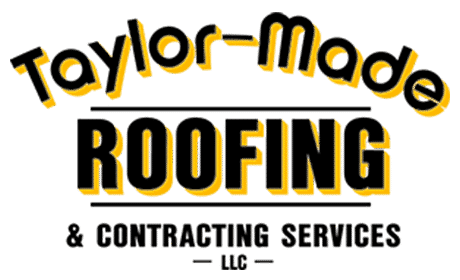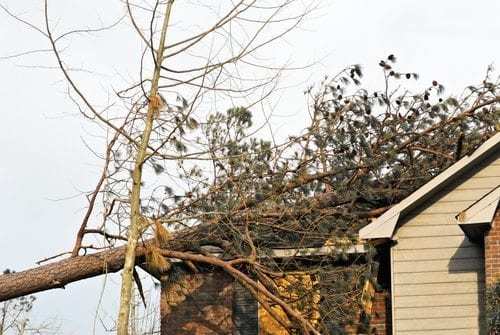Sometimes storm damage will be obvious: a tree crashing through your roof, shingles on the ground, major ceiling leaks, etc. Other times, it will require some probing and perusing. However, even small and seemingly insignificant roof damage can have a major impact on your home and finances, especially if the issue is ignored, unnoticed, or put on the back burner. To be sure that you are able to find and treat storm damage quickly, use the tips below to learn how to identify storm damage.
How to Identify Storm Damage
First, if a tree limb or other debris has fallen on your roof during a storm, do not attempt to climb up for a closer look. There may be structural damage, which can be very dangerous. Exercise extreme caution, and contact a professional roofer for help. Ideally, you should examine your roof from the ground (perhaps using binoculars) or from a window inside the house (if possible). Avoid climbing onto the roof.
Whichever way you choose to inspect your roof, take some time to thoroughly examine its condition. As you search, look for the following signs of storm damage:
- A dark spot, like a bruise, where the roofing granules have been knocked off
- Missing shingles
- Missing sections of the roof
- Torn, dented, or cracked shingles
- Creased shingles, creating horizontal lines without granules
- Dents or round-shaped divots on shingles
- Granules collecting in gutters or downspouts
- Leaks inside the house in the attic, ceilings, or walls
- Dented vents, gutters, or flashing
- Missing pieces of metal fascia
- Splits in wooden shingles that may be brown/orange and have sharp edges
- Mold, wood rot, decay, or other water damage
- Debris on the roof deck
Recognize that some of the damage you spot may not have actually been caused by the recent storm. Sometimes normal wear and tear is mistaken for storm damage. This can include brittle shingles, blistering, flaking, cracking, a loss of granules, or shingles that appear aged.
Beyond learning how to identify storm damage on your roof, remember to examine the other exterior components of your home. Especially if the storm included hail, wind, or flying debris, the house may be physically harmed in other areas. No matter what your home’s siding material, look for these common signs of exterior damage:
- Spots
- Dings and dents
- Holes
- Chipping
- Cracking
- Discoloration
- Cracked windows
- Broken window panes
- Damaged window casings
As soon as you spot storm damage on your home’s roof or exterior, schedule a professional inspection and repair. This will prevent the problem from escalating and causing further issues, such as water damage or mold. In addition, it will ensure that you stay within your insurance policy’s strict time limit.
When a storm strikes your home, contact Taylor-Made Roofing if you live in southern Missouri. We can inspect your roof, repair any damage, and help you maintain your roof for decades to come. With over 20 years of experience in residential and commercial roofing, Taylor-Made Roofing is a company that you can trust with all of your roofing needs. Our family-owned business offers quality services, a reassuring warranty, and free estimates. For more information, please give us a call at 417-326-8778 or contact us online. We look forward to hearing from you!

